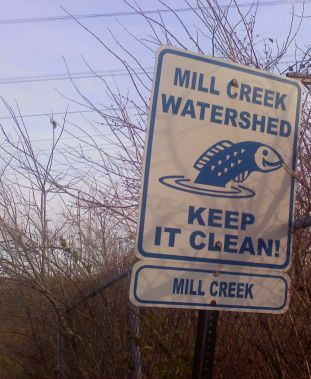Maketewah was the original Native American name for the Mill Creek prior to the 1790’s. The word is actually a corruption of the Shawnee word "Mkateewa" and meant “it is black” because of the dark rich soil that made up the bed of the creek that at the time was rich in wildlife.

A nearby country club is named for Maketewah but their website incorrectly states that it is a Mohawk term for “Land of the Mill Valley”. However there were no Mohawks or mills here then so I am not sure how they arrived at that conclusion!
When John Cleves Symmes was sectioning the Miami Valley for new settlers in the late 1700’s the Shawnee still considered the land above the Ohio River theirs and sought to keep it that way.
This situation made it a very dangerous place to live for everyone and the area was often referred to as the Miami Bloodbath.
Symmes knew that the area needed some PR and thought that the large creek running between the Great Miami and the Little Miami sounded a bit too ethnic and possibly frightened off potential settlers so he changed the Maketewah's name to the Mill Creek to attract millers to the area. This ploy worked well and settlers did indeed flood the area with industry but over time this once lush body of water was transformed into an open sewer from all of the waste being emptied into it and eventually became known as "the most endangered urban river in North America."
Today, the Mill Creek, after 100 years of neglect has seen a revitalization due to efforts by several organizations in the last decade who have worked to clean up the 29 mile stream that empties into the Ohio River just west of downtown Cincinnati.
